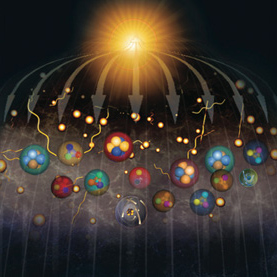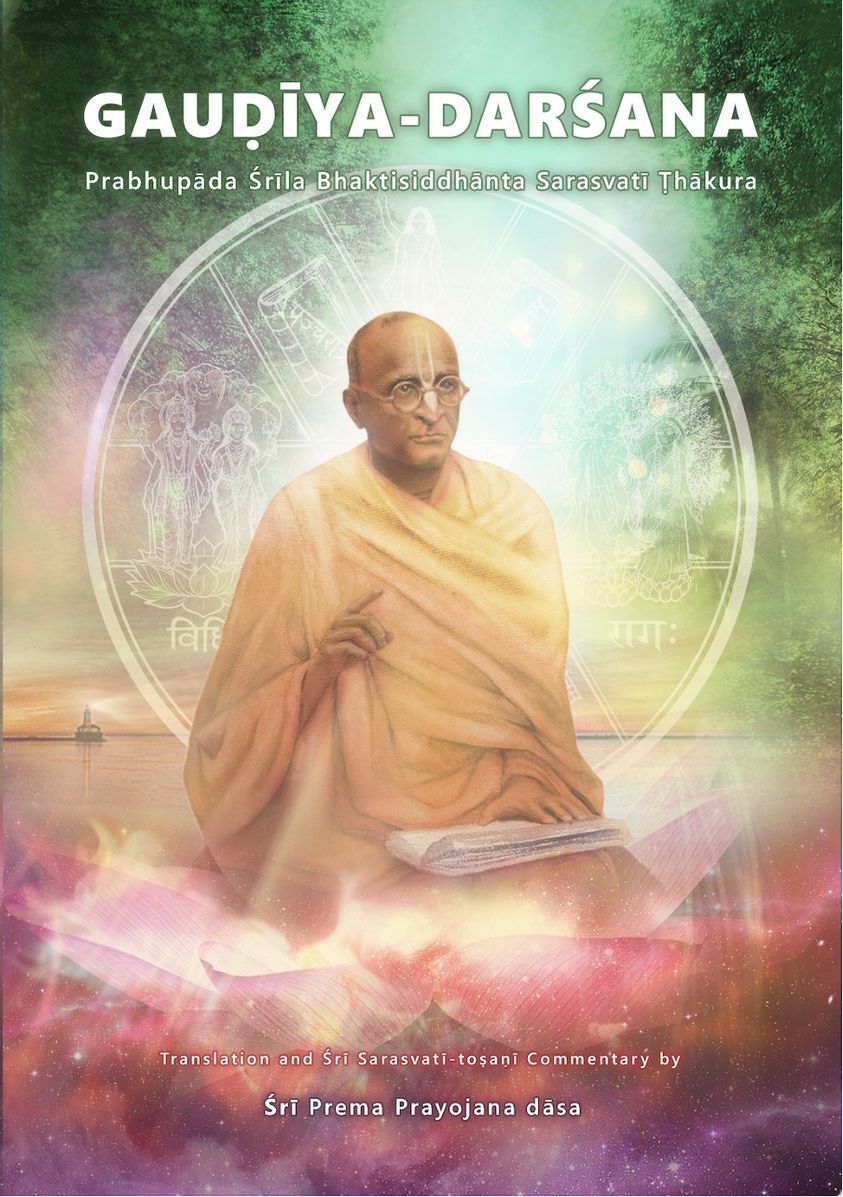Big bang Questions 2

From an explosion comes chaos not harmony.
The Question of Origins
The problem of the singularity is simply part of the larger problem of understanding the origin of the initial condition of the universe, whatever it may have happened to be. If a model of universal origins involves a singularity, that certainly creates severe theoretical difficulties. But even if the singularity can somehow be avoided, we are still confronted with the question of where the universe came from. Hoping to sidestep the whole issue of origins, some scientists have proposed the so-called “infinitely rebounding universe,” a universe that expands, contracts to a singularity, and then again expands and contracts continually through the course of unlimited time. There is no beginning and no end, only an endless cycle. This resolves the problem of the origin of the universe by proposing that there is no origin and that the material universe has always existed.
But there are some serious problems with this model. First of all, no one has ever proposed a satisfactory mechanism for the bouncing. Futhermore, in The First Three Minutes physicist Steven Weinberg points out that with each successive bounce progressive changes must take place in the universe. This indicates that at some point there must be a beginning and not a regress extending over an infinite period of time.10 And thus again you confront the question of origins.
Another creative attempt to escape the necessity of dealing with the question of origins is the time-reverse rebounding universe model proposed by English astrophysicist Paul Davies. The universe would expand with time flowing forward and then collapse to a singularity. During the rebound, time flows backward as the universe expands and collapses again into a singularity, the same singularity from which it began its previous forward cycle. In this model, the past becomes the future, and the future becomes the past, thus making the statement “in the beginning” meaningless. This scenario gives one small indication of the many imaginative schemes the cosmologists have been forced to resort to in order to explain the origin of the universe.
The Inflationary Universe
Quite apart from the question of where the initial condition of the universe comes from, there are other problems troubling modern cosmologists. In order for the standard big bang theory to predict the distribution of matter we observe within the universe, the initial state has to be fine tuned to an incredible degree. The question then arises, how did the initial state get that way? Physicist Alan H. Guth of M.I.T. has proposed a version of the big bang model that automatically produces the required fine tunings, doing away with the necessity for artificially introducing them into the equations. Called the inflationary model, it assumes that within a rapidly expanding, superheated region of the universe a tiny section cools off and then begins to expand much more violently, just as super cooled water rapidly expands when it freezes. It is this phase of rapid expansion that resolves some of the difficulties inherent in the standard big bang theories.
But Guth’s version has difficulties of its own. Guth has been forced to fine tune his own equations in order to get them to yield his inflationary universe. Thus he is confronted with the same difficulty his model was supposed to overcome. He had hoped to explain the fine tuning required in the big bang universe, but he requires unexplained tuning of his own. Guth and his collaborator Paul J. Steinhardt admit that in their model “calculations yield reasonable predictions only if the parameters are assigned values in a narrow range. Most theorists (including both of us) regard such fine tuning as implausible.”11 They go on to express a hope that in the future mathematical theories will be developed that will enable them to give a plausible expression of their model.
This dependence on as yet unrealized future developments highlights another difficulty with Guth’s model. The grand unified theories (GUTs) upon which the inflationary universe is based are completely hypothetical and “have little support from controlled experiments because most of their implications are impossible to measure in the laboratory.”12 (The grand unified theories are very speculative attempts to tie together some of the basic forces of the universe.)
Another problem with Guth’s theory is that it does not even attempt to explain the origin of the superheated expanding condition necessary for his inflation to take place. He has toyed with three hypothetical origins. The first is the standard big bang—according to Guth the inflationary episode would take place within the very early stages of it. This model, however, leaves us with the knotty singularity problem already discussed. The second option is to assume an initial condition of random chaos, in which some regions would be hot, others cold, some expanding, some contracting. The inflation would begin in an area that was superheated and expanding. But Guth admits there is no explanation for the origin of the imagined primordial random chaos.
The third alternative, favored by Guth himself, is that the superheated expanding region emerges quantum-mechanically from nothing. In an article that appeared in 1984 in Scientific American, Guth and Paul J. Steinhardt state, “The inflationary model of the universe provides a possible mechanism by which the observed universe could have evolved from an infinitesimal region. It is then tempting to go one step further and speculate that the entire universe evolved from literally nothing.”
As attractive as this idea may seem to scientists who balk at any suggestion of a supreme intelligence that designed the universe, it doesn’t hold up under close examination. The literal “nothing” Guth is speaking of is a hypothetical quantum-mechanical vacuum state occurring in a still-to-be-formulated ultimate grand unified theory combining the equations of both quantum mechanics and general relativity. In other words, this vacuum state cannot now be described, even theoretically.
However, physicists have already come up with a description of a simpler kind of quantum-mechanical vacuum state, which can be visualized as containing a sea of “virtual particles,” atomic fragments that almost but not quite exist. From time to time some of these subatomic particles pop out of the vacuum into material reality.
Such occurrences are called vacuum fluctuations. The fluctuations cannot be directly observed, but theories based upon them have been corroborated by laboratory experiments. What theoretically occurs is that a particle and antiparticle appear without cause from the vacuum and almost instantaneously negate each other and disappear. Guth and his colleagues postulate that instead of just a tiny particle, the entire universe popped out of the vacuum. And instead of instantaneously disappearing, our universe has somehow persisted for billions of years. The singularity problem is avoided by having the universe pop into being a little bit beyond the stage of singularity.
There are two basic shortcomings in this scenario. First, it involves a truly impressive speculative leap from our limited experience with subatomic particles in the laboratory to the universe as a whole. Stephen Hawking and G.F.R. Ellis sagely warn their colleagues who would without hesitation hurl themselves headlong into such wild speculation, “There is of course a large extrapolation in the assumption that the physical laws one determines in the laboratory should apply to other points of space-time where conditions may be different.”14 Second, it is actually misleading to speak of the quantum-mechanical vacuum as “literally nothing.” To describe a quantum-mechanical vacuum, even the relatively simple one of currently existing theory, requires chapters upon chapters of highly abstract mathematics. Such an entity is certainly “something,” and this raises the interesting question of where such a complicated “vacuum” might come from.
At this point let us return to the original problem Guth was trying to solve with his inflationary model: trying to eliminate the need. for fine tuning the initial conditions in order to obtain the observed universe. As we have seen, he hasn’t succeeded. But another problem is this: does any version of the big bang theory, including Guth’s, really predict the observed universe? What Guth says he finally gets out of his complicated initial state is a universe about 4 inches across, filled with nothing more than a uniform super dense, superheated gas. This will expand and cool, but there is no reason to suppose that it will ever become more than a cloud of uniformly distributed gas. In fact, this is all that any of the big bang theories leave you with. So if Guth’s present theory requires implausible tinkering simply to yield a universe consisting of uniformly distributed gas, then we can just imagine what would be necessary to get it to yield the universe as we know it today. In a good scientific explanation many complex phenomena can be deduced from a simple theoretical scheme, but in Guth’s inflationary universe—and indeed in the standard big bang theories—we have just the opposite: from a very complex tangle of equations, we just get an expanding uniform ball of gas. Despite this, science magazines run articles about. the inflationary model, complete with pages of high-tech illustrations, that give the impression Guth has finally achieved the ultimate goal—explaining the origin of the universe. Not quite, it seems. Perhaps they should run regular columns in the science magazines featuring the universal origin theories of the month.
We can just imagine the complexity of the initial conditions necessary to produce the universe as we know it, with all its varied structures and organisms. In our own universe, these conditions seem to have been arranged far too precisely to be explained simply by physical laws. Thus one could conceivably argue in favor of a designer. At this point some noted theorists, unable even to consider such an idea, take shelter of what they call “the anthropic principle.”
They propose that the quantum-mechanical vacuum is producing universes by the millions. The great majority are not constituted so as to produce life. These universes therefore do not contain observers who could study their conditions. However, other universes, including our own, are constituted so as to have produced observers, and it is therefore not surprising that these observers would discover that their universe possesses some rather startlingly precise conditions to allow for the existence of life. According to this line of reasoning, the observers should not expect to find anything other than such improbably complex conditions. In effect, supporters of the anthropic principle take the very existence of human beings as the explanation of why the universe is so constituted as to have produced human beings. But this logical sleight of hand isn’t an explanation of anything.
Another form of verbal jugglery is to say straight out, as many scientists do, that the universe has occurred by causeless chance. But it must be pointed out that this also is not at all an explanation. To say that something happens once by chance is in essence no different than simply saying “it happened”’ or “there it is.” And these statements do not qualify as scientific explanations. In the end you wind up knowing no more than you did before. In other words, by invoking either chance or the anthropic principle the scientists have not actually explained anything about the origin of the universe.
At this point, the theorists could perhaps forgive us for suggesting that their chosen methods might not be quite adequate for the task at hand. Indeed it appears, in addition to the problems we have already discussed, that general relativity and quantum mechanics, the two intellectual tools with which the cosmologists are attempting to define the development of the universe, contain certain flaws. It is true that these theories have been very successful in describing certain physical phenomena, but this does not prove they are perfect in all respects.
General relativity describes curved space-time and is an integral part of every current theory of universal origins, including the big bang theory and Guth’s inflationary model. If general relativity is in need of revision in any way, then any universal theories based on it will also need to be revised.
One major difficulty with general relativity and Einstein’s earlier theory of special relativity is that they rule out time as we commonly understand it. In Newtonian physics, time is treated as a variable separate from space. In this way, it is possible to chart the path of an object moving in space and time in the following way. At a particular point in time, the object is located at a particular point in space. As time varies, the position of the object in space varies.
But in Einstein’s theory of relativity, this conception evaporates. Instead, time and space are wedded together in a four-dimensional space-time continuum. It is no longer possible to describe an object as occupying a particular point in space at a particular point in time. A relativistic description of an object will show its spatial and temporal existence in its entirety, merged from beginning to end, wherever it is happening. For instance, a human being would be depicted as the entire progression from embryo to corpse. Such constructs are labeled “space-time worms.” And physics does not permit the space-time worm to say, “Now I am an adult and I used to be a child.” There is no passage of time; the whole sequence exists as one unit. If we are space-time worms, we are just configurations of matter, not personalities with consciousness. Defining human beings in that way invalidates our individual perception of past, present, and future, and thus leads to the conclusion that such perceptions are unreal.
In a letter to Michael Besso, Einstein wrote, “You have to accept the idea that subjective time with its emphasis on the now has no objective meaning.15 When Besso died, Einstein tried to console his widow by writing, “Michael has preceded me a little in leaving this strange world. This is not important. For us who are convinced physicists, the distinction between past, present, and future is only an illusion, however persistent.”16 This is in effect a denial of consciousness, which entails the reality of the present experienced moment. We experience our present form as real, whereas our infant form exists only in memory. As conscious beings we can definitely experience that we do occupy a particular bodily form at a particular point in time. Despite the fact that relativity theory converts a series of events into a single unified spatio-temporal entity, we actually experience in sequence different points in time. What all this means is that every theory of universal origins built around relativity theory fails to explain our conscious experience of time, thus making these theories, as they stand, incomplete and unacceptable.
Ref: Bhaktivedanta Vedabase
All copyright belongs to The Bhaktivedanta Book Trust
Other references
1. Erwin Schrodinger, What Is Life? and Mind and Matter (Cambridge: Cambridge University Press, 1967), p. 68.
2. Richard Wolkomir, “Quark City,” Omni, (February 198,4), p. 41.
3. Kenneth E. Boulding, “Science: Our Common Heritage, Science, Vol. 207 (February 22, 1980), p. 834.
4. Sir Bernard Lovell, “The Universe,” The Random House Encyclopedia (New York: Random House, Inc., 1977), p.37.
5. Steven Weinberg, The First Three Minutes (New York: Bantam, 1977), p. 94.
6. S. W. Hawking and G. F. R. Ellis, The Large Scale Structure of Space-Time (Cambridge: Cambridge University Press, 1973), pp. 362–63.
7. S.W. Hawking and G. F. R. Ellis, The Large Scale Structure of Space-Time, p. 364.
8. Sir Bernard Lovell, “The Universe” The Random House Encyclopedia, p. 37.
9. S. W. Hawking and G. F. R. Ellis, The Large Scale Structure of Space-Time, p. 360.
10. Steven Weinberg, The First Three Minutes, p. 143
11. Alan H. Guth and Paul J. Steinhardt, “The Inflationary Universe,” Scientific American, (May 1984), p. 127.
12. Mitchell Waldrop, “Before the Beginning,” Science 84 (January/February 1984), p. 51.
13. Alan H. Guth and Paul J. Steinhardt, “The Inflationary Universe,” Scientific American, p. 128.
14. S. W. Hawking and G. F. R. Ellis, The Large Scale Structure of Space-time, p. 1.
15. Ilya Prigogine, From Being to Becoming (San Francisco: W. H. Freeman and Co., 1980), p. 20.
16. Ilya Prigogine, From Being to Becoming, p. 20.
17. Werner Heisenberg, “The Representation of Nature in Contemporary Physics,” Daedalus, Vol. 87, No. 3 (1958), pp. 95–108.
18. Bryce D. Witt, “Quantum Mechanics and Reality,” Physics Today (September 1970), p. 33.
19. P. A. M. Dirac, “The Evolution of the Physicist’s Picture of Nature,” Scientific American (May 1963), pp. 45–53.
20. David Hunter, “The Grand Unification of Physics” Softalk (March 1984), p. 91.
21. Steven Weinberg, The First Three Minutes, p. 68.
22. Marcia Bartusiak, “Missing: 97 % of the Universe,” Science Digest (December 1983), p. 53.
23. Bart J. Bok, “The Milky Way Galaxy,” Scientific American (March 1981), p. 94.
24. William McRae, “The Origin of Earth, Moon, and Planets,” in The Encyclopedia of Ignorance, ed. Ronald Duncan and Miranda Weston-Smith (New York: Pergamon Press, Ltd., 1977), p. 48.
25. David Bohm, Causality and Chance in Modern Physics (London: Routledge and Kegan Paul, Ltd., 1957) p. 133.
26. John Gribbin, White Holes (New York: Delacorte Press. 1977), p. 9.
27. John Gribbin, White Holes, p. 107.
28. Paul Davies, “The Eleventh Dimension,” Science Digest (January 1984), p. 72.
OM 2: Chance and the Origin of the Universe









